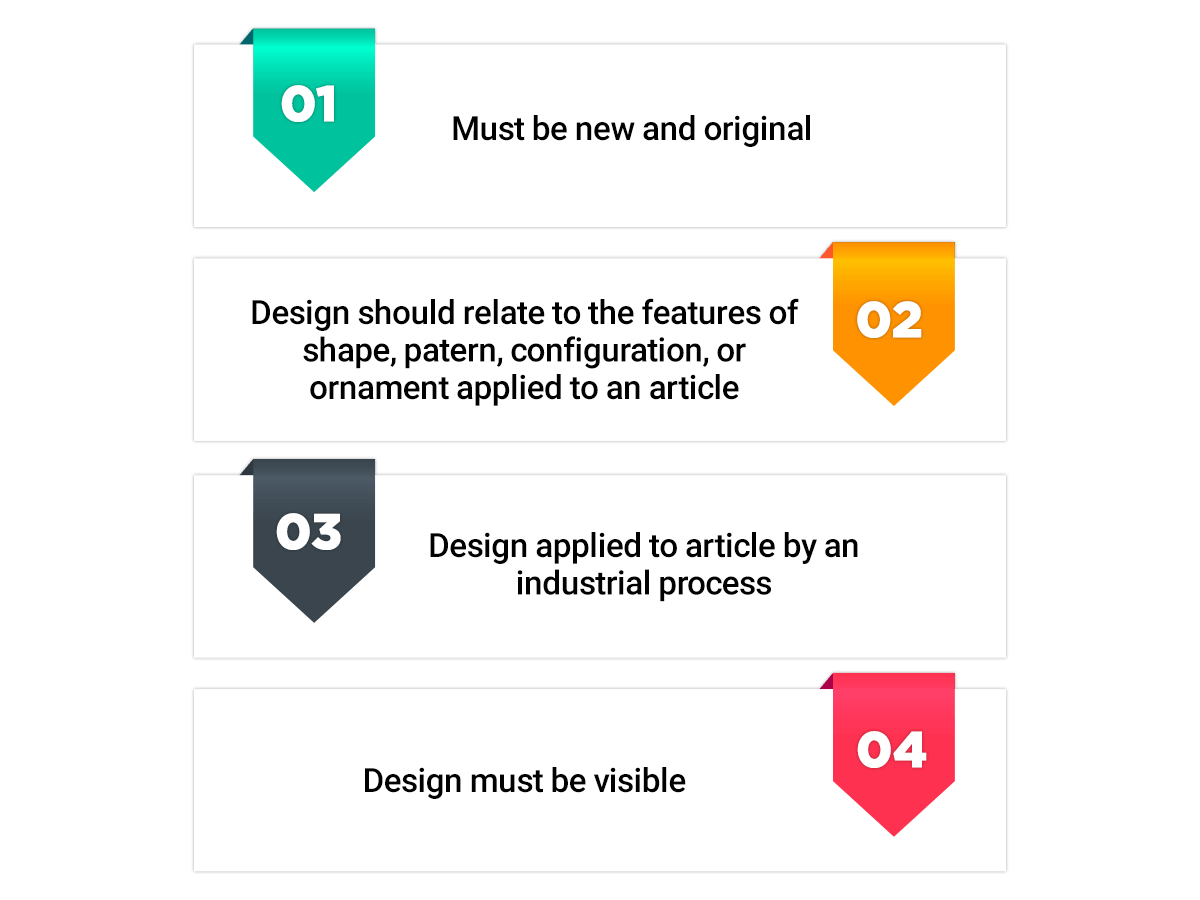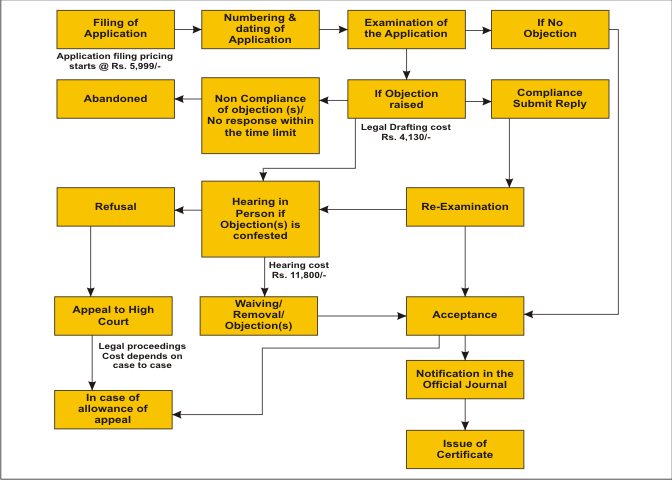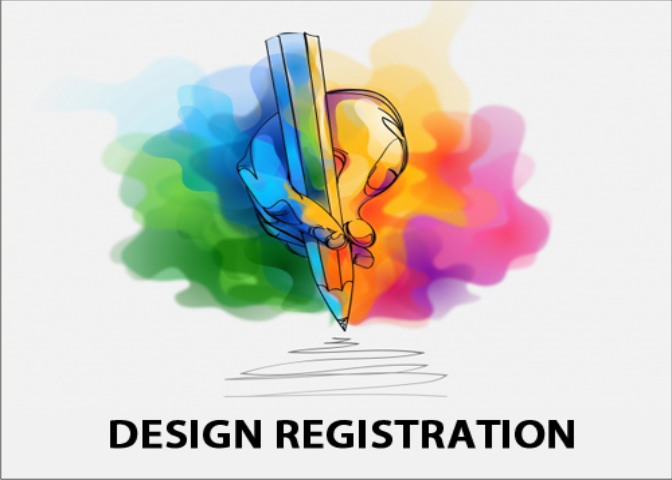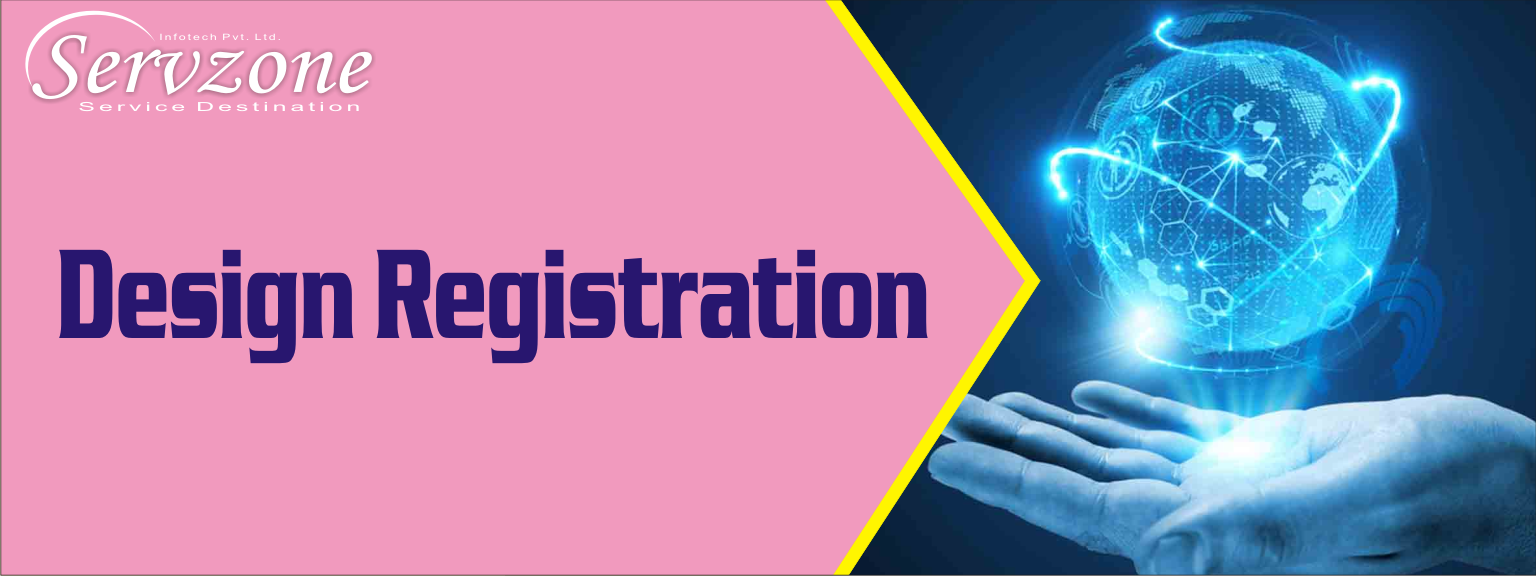Get Started With
servzone
Overview
Design registration is done to protect shapes, features, patterns, or jewelery. Intellectual property is often protected under design registration. Design can be of three-dimensional features, such as the shape or configuration of an article, or two-dimensional features that include patterns or ornaments. Words & ldquo; Pattern & rdquo; And & ldquo; Jewelry & rdquo; Lets talk about things that have been etched, engraved in an article, or place an article to glamorize it.
Under the Design Act, 2000, things like the shape, configuration, pattern or ornament or composition of lines or colors or combinations used in an article are registered. A design must meet the following conditions to be registered:

Design registration gives exclusive rights to its owner and manufacturer. The registration gives the manufacturer the right to use the design for a period of ten years, the time period can be extended for five more years. In case of any violation, the owner can seek legal help under the Design Act.
Required Documents
- Certified copy of original or certified copies of extracts from the disclaimer
- Affidavit
- Announcements
- Other public documents may be made available upon payment of fees.
Be sure to keep the affidavit in paragraph form and include a declaration of truth and verification. According to the Fourth Schedule, the controller designs control the costs involved in the registration process.
Important Points of Design Registration
- File Professionally
It is necessary to file professionally for design registration as a convenient way to ensure that the design is properly protected. A professional with the help of an experienced professional like servzone helps in the design registration process by filling the application and addressing all aspects of the Design Act.
Design registration requires filing in a professional manner to ensure that the design is properly protected. A professional, assisted by an experienced professional such as the Service, helps in the design registration process by completing all aspects of the Design Act and addressing the application.
- Government Process
Design registration is a tedious process performed by the registrar only. The registrar goes through the facts and premises of each case. Therefore, it is easy to file for a design registration application with the help of a professional. The knowledge, experience and expertise of professionals make the registration process easier.
- Time
Once you file a design registration application, it becomes your responsibility to monitor the status of the application. The design registration application often undergoes a separate timed response or action from the applicant.
- Protection
The Patent Office makes a list of all designs that have been registered. The purpose behind the list is to tell contestants about the registration of a design and thus prevent forgery. In case of any duplication, the owner of the registered design has the right to take legal action under the Design Act.
- 10 years of security
The Design Act legally protects designs registered under it often for years, renewable for another five years.
Difference between trademark and design registration
- Difference in definition
Trademark: A trademark serves as a symbol of your business. A symbol can be in the form of a logo or word. trademark registration prevents such symbols from being fake.
Design: A special graphical representation used to circumvent the design.
- Difference in Innovation
Trademark: A trademark can be anything, from word to logo to word mark or shape. It is not necessary to keep the trademark new.
Design: A design is more than just a representation so it is necessary to make it new and unique.
- Difference in security
Trademark: A trademark is a reflection of a business that it embodies. What a trademark looks like depends on the factor that the trademark is about. Trademark protection is granted so that no other company uses the same mark and in case of any infringement the trademark holder has the right to sue the company.
Design: The purpose of design registration is to protect the product. It covers all aspects of the product, ie how it looks and what it does.
- Difference in Security Act
Trademark: Trademark Act 1999 protects trademarks. A mark that can be presented as an underline and is efficient enough to distinguish a person's goods and services from another person may be considered for registration.
Design: The Design Act 2000 protects design that, according to the Act, shapes, configurations, patterns or ornaments or lines composition or color or combination are used.
Benefits
- A good design makes any article or ornament attractive and attractive. Thus, it increases its commercial value as well as the marketability of the product.
- When a design is preserved, the author has the right to sue the person or entity who is copying or imitating the design. This guarantees that the product design is authentic and original and exclusive to the owner.
- Design registration protects the visual characteristics of products / packaging. There are many companies that rely on copyright and give themselves adequate coverage. However, when a protest arises, the other party will contest the validity of the copyright. Design registration can therefore be considered the right choice to evidence the validity of certain rights.
- When a designer adds something unique / creative to his product, he adds different characters to the design. The market has its own approach of uniqueness which helps in creating new products among all existing products.
Registration process
The initial step is to weaken the design for the achievement of the product for any organization. A large measure of property and time is spent planning to stand out in the market and grab the consumer's attention. Naturally, organizations want these planning rights to be protected with the goal that their valuable ideas are not taken over by third parties.
The administration office responsible for the registration of the mechanical scheme is the office of the director general of patents, designs and trademarks. Registration and securing of modern schemes in India is guided by the Design Act of 2000.
The official meaning of 'design' refers to highlights, for example, shapes, configurations, patterns or colors or a mixture applied to any article by any mechanical process that appeals to the eye in the full article. It excludes any rules of development or any trademarks, property marks or creative works. The structure must be new or unique and must not be distributed to any nation before the date of application for registration.

Registration Procedure is as follows:
- Check for Previous Registration
Check if you have registered your design in the past. For that purpose you will have to file an application in the Patent Office. It makes sense for you to file the design as soon as possible because the system works on a first-to-file rule.
- Application
Write an application and provide information like name and address, whether you are a company or an individual, details related to the article and its class etc.
- Scrutiny and Approval
The Patent Office later examines it. If it is all together, it gets approved and registered and later certificate of registration is issued to the applicant. After the recording of plan, the article, alongside other bibliographic information, gets advised in the Patent Office Journal, distributed each Friday. The whole idea could take around a year in the event of complications.
- Design registration
When your design is registered, it makes an entry in the Design of Register, a document that the Patent Office maintains. This includes design number, date of filling, class number, address and proprietor's name.
- Design period
Design registration lasts for 10 years which can be extended up to five years.
- Priority claim
India is one of the signatories to the Paris Agreement, so the arrangement is relevant to the privilege of necessity. This case allows you to file another application for a similar or trademark in a different nation, which is as important as the date of filing the major application.
- Design Violations
In case of any violation, the proprietor has the right to stop exploitation and take legal action to claim any damages. The law breaker is obliged to pay 25000 rupees for any loss to him or her.


GST Registration

PVT. LTD. Company

Loan

Insurance


